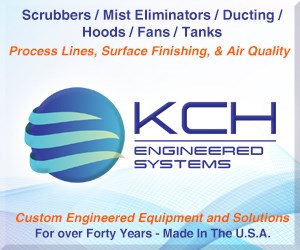“Trees” in Nickel Plating
We are getting “treeing” and roughness on some of the parts that we plate in a Watts nickel plating bath. What causes this and how can we minimize the problem?
This column marks the end of my eighth year of attempting to give straightforward responses to day-to-day issues that arise in the electroplating arena. It is challenging at times but very enjoyable. All of the questions are real. Yes, I do edit if necessary and change people’s initials to help maintain anonymity.
I have learned that certain questions reappear on a regular basis and many problems and questions are easily answered in the format afforded by this column. Those that are not suitable for use in the column are usually handled via direct e-mail and/or phone discussions. Some questions are such that they can only be handled on a consulting basis. I will continue to respond to questions and problems in a timely manner and with information that can help solve your problems.
Q. We are getting “treeing” and roughness on some of the parts that we plate in a Watts nickel plating bath. What causes this and how can we minimize the problem? I.W.
A. Treeing or the formation of dendrites usually occurs when current density is too high or your plating solution contains insoluble particles. These same conditions can also cause roughness of the plated deposit.
To minimize this problem you should filter the solution thoroughly and if you are not already doing so, set up continuous filtration on your nickel tank. The continuous filtration system should allow for 2–5 turnovers per hour and the filter should have a 5–15 micron density. Vendors of filtration systems can be found in the Products Finishing Directory & Technology Guide under Filtration Equipment or by accessing www.pfonline.com/suppliers.html.
The second thing you should do is manage your current density better. If the treeing is found around the edges, more than likely your current density is too high. Try reducing the current density and see if this improves your results.
Related Content
-
Liquid Chrome Vs. Chromic Acid Flake
Contemplating how to continue offering chromic acid services in an increasingly stringent regulatory world? Liquid chrome products may be the solution you’re looking for.
-
A Chromium Plating Overview
An overview of decorative and hard chromium electroplating processes.
-
Troubleshooting Alkaline Zinc
One of the most common problems that can arise when plating with alkaline zinc is an imbalance of brightener in the solution. In this helpful Ask the Expert article, Chad Murphy of Columbia Chemical discusses how different zinc metal concentrations and brightener concentrations can impact efficiency.
















